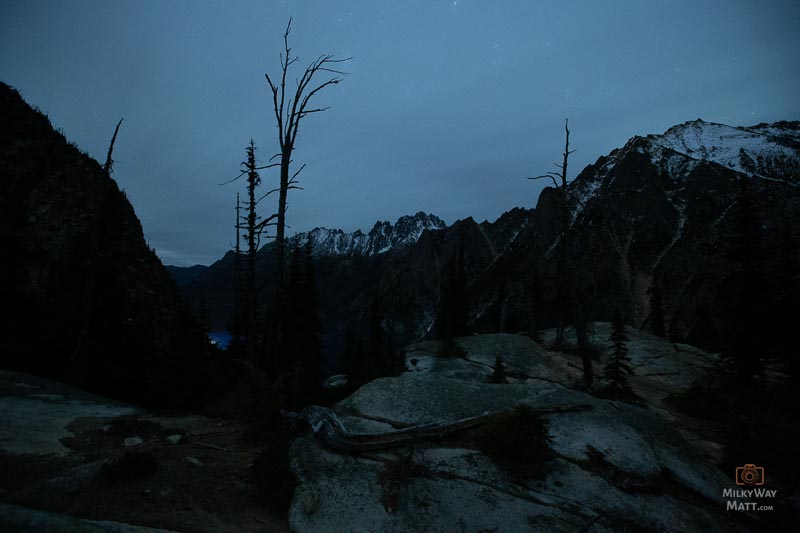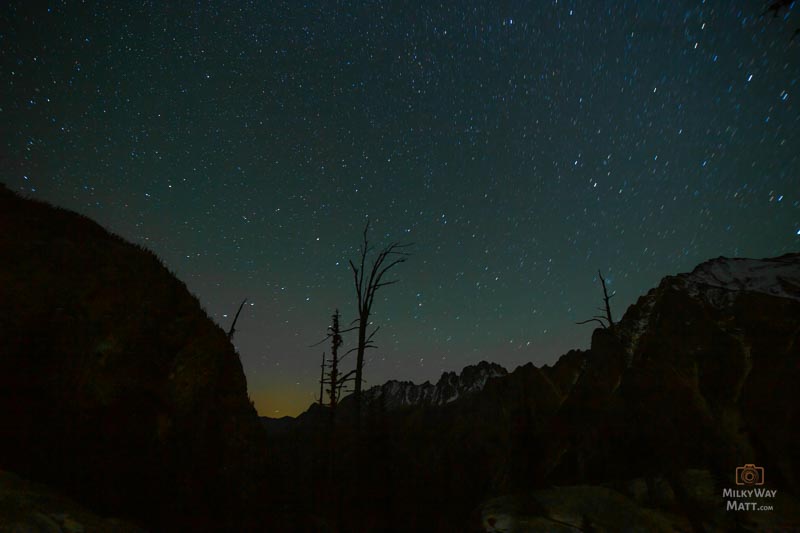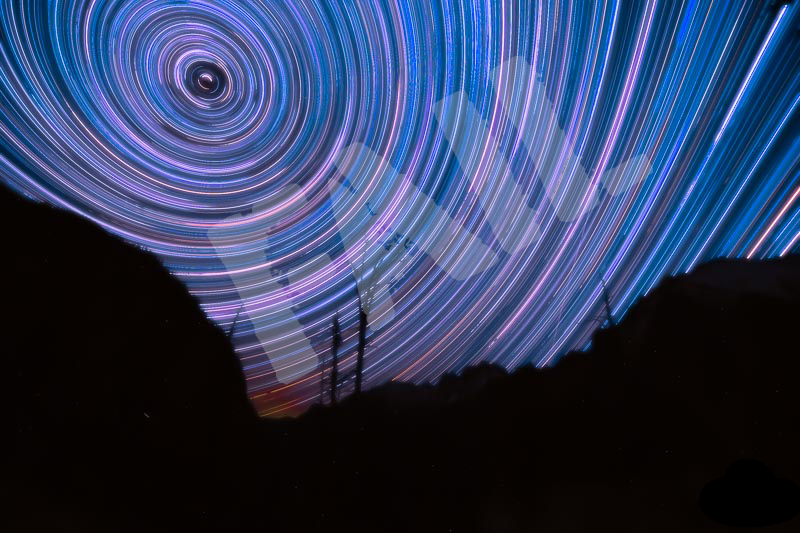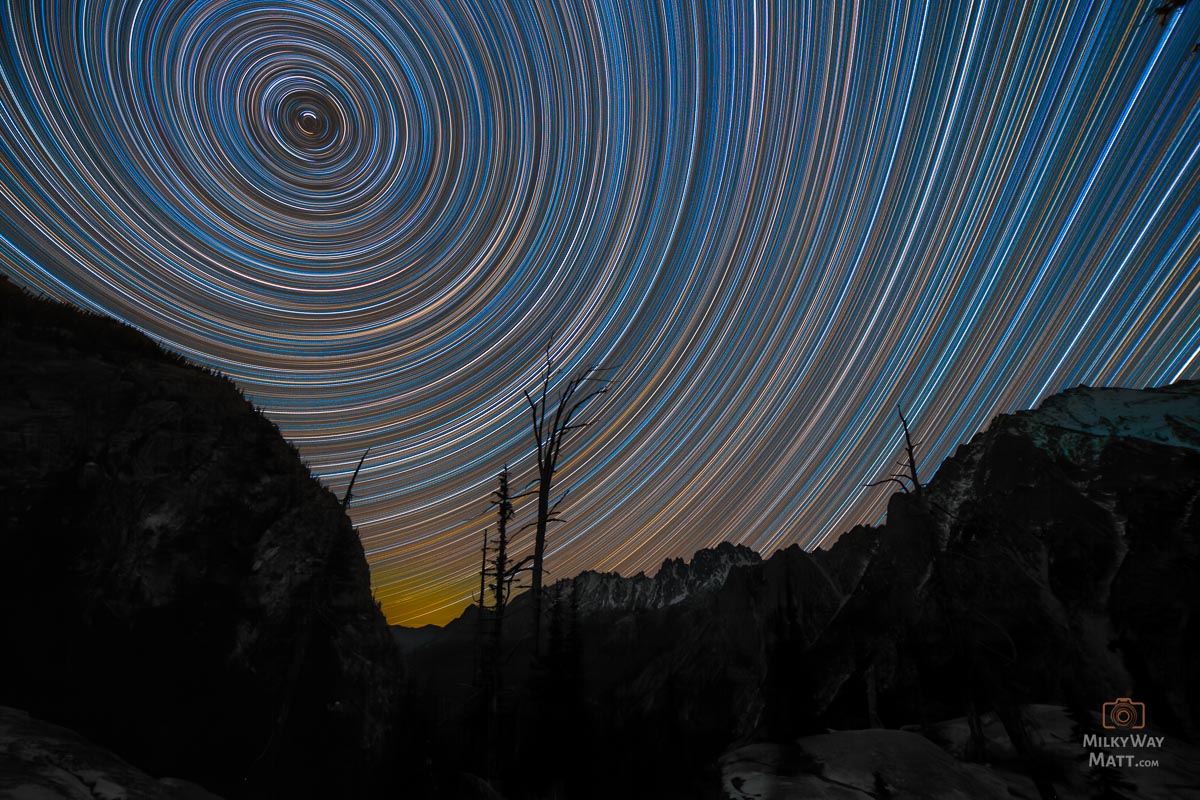



Stories and Lessons Learned

Washington Pass Star Trail
[Click the last image for bigger view of the full star trail]
I’d never shot at the Washington Pass before, but I’d seen images of it from other photographers and it looked stunning. When a rare chance for a clear sky in late October popped up, I decided to chance it.
I try to always compose my shot in the daytime, and look for interesting interactions between the sky and land.
My plan was to use this valley to frame stars swirling into the concentric circle around Polaris, and then off to the point where the circle widens and starts to reverse.
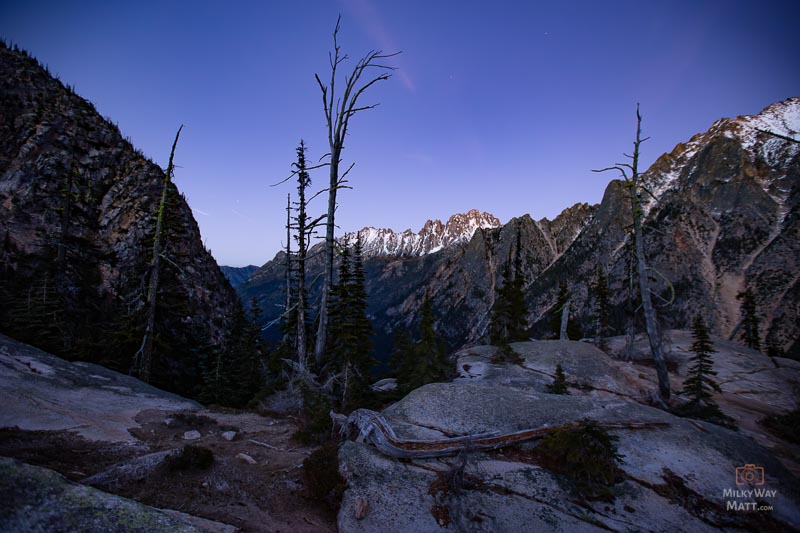
Just as I was setting up the shot, the clouds rolled in - gah! It looked like I wasn't going to get the shots I needed. I was already there, so I set up the camera hoped for the best.
When I checked the camera the next morning, I had no idea if there were any usable shots, but I got lucky!
Sure enough, the clouds had cleared and I got 192 usable shots.
Here's a time lapse of the night
Here's a still from the series.
I hate to admit it, but I shot this almost four years ago! The first time I started processing the image, I was so excited to see how it would turn out that I jumped in without a plan, and was sloppy with my workflow. It didn't go well!
Chromatic Star Trails retain the hue and saturation of the stars, which makes them beautiful, but can also make them challenging in the editing process. Little decisions early on have a big impact on your later options. If you head down the wrong path, your colors can get out of control, and it's hard to get them to behave.
That's exactly what happened when I jumped in and started making haphazard edits. I ended up with the image below. It's interesting, but not up to par, and not at all what I wanted.
I got so frustrated with the image that I put it at the bottom of the pile and didn't want to look at it again for a long time.
Of course, the image wasn't to blame. The shots were perfect. I just needed to start fresh.
It was only later, as I was working on my star trails course - The Ultimate Guide to Chromatic Star Trails, that I reflected on what went wrong. I went back methodically this time and followed the process I teach my students. THIS is what I was looking for - bright, vibrant colors, but with a feeling of grace and tranquility.
Camera and Settings: 6D MK1, Canon 16 to 35, f3.5, ISO 400, 120 seconds. In a very dark location like this, a longer exposure time helps bring light to the landscape without blowing out the stars.
Click on the image to enlarge
More info on The Comprehensive Chromatic Star Trails Course or just scroll down
